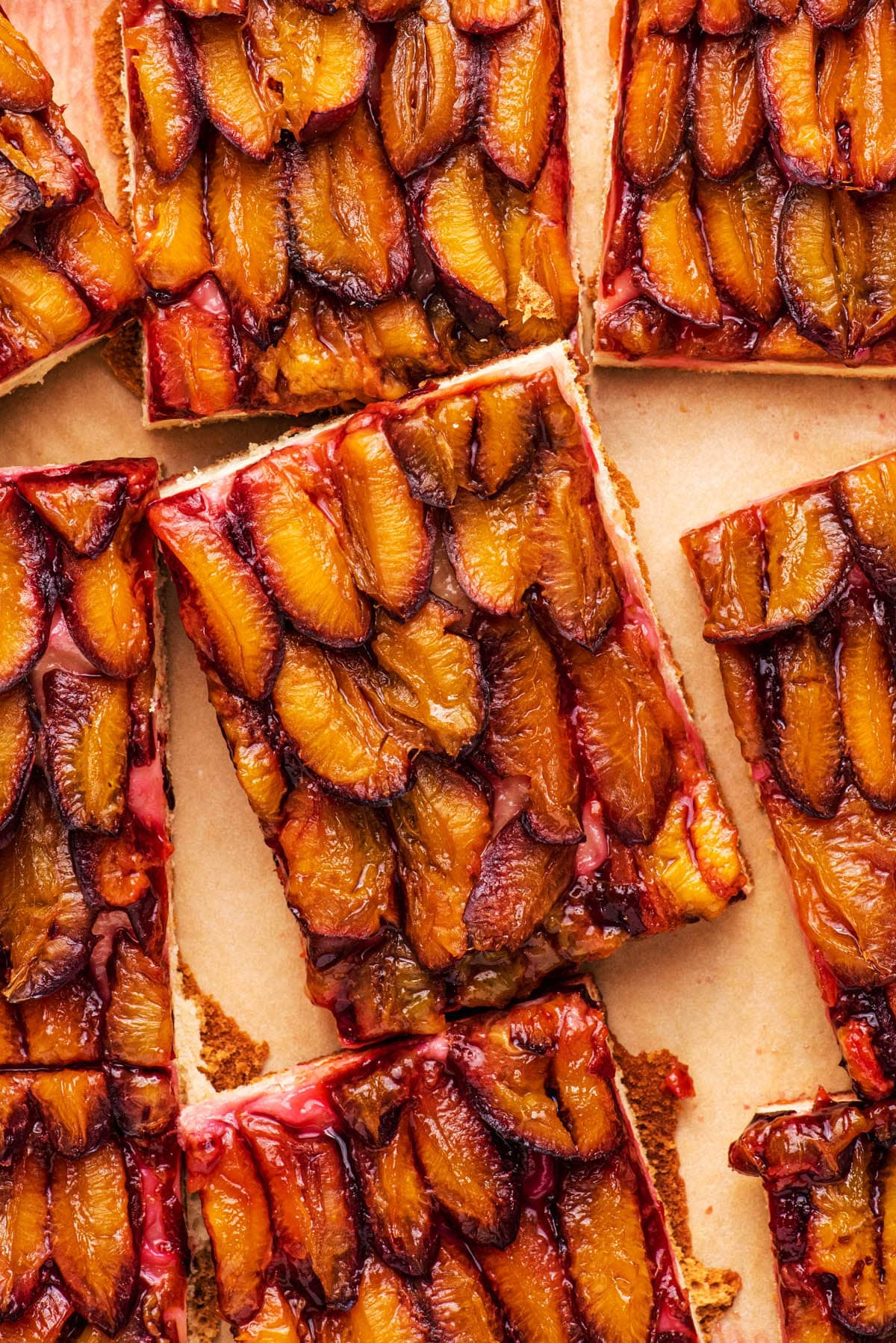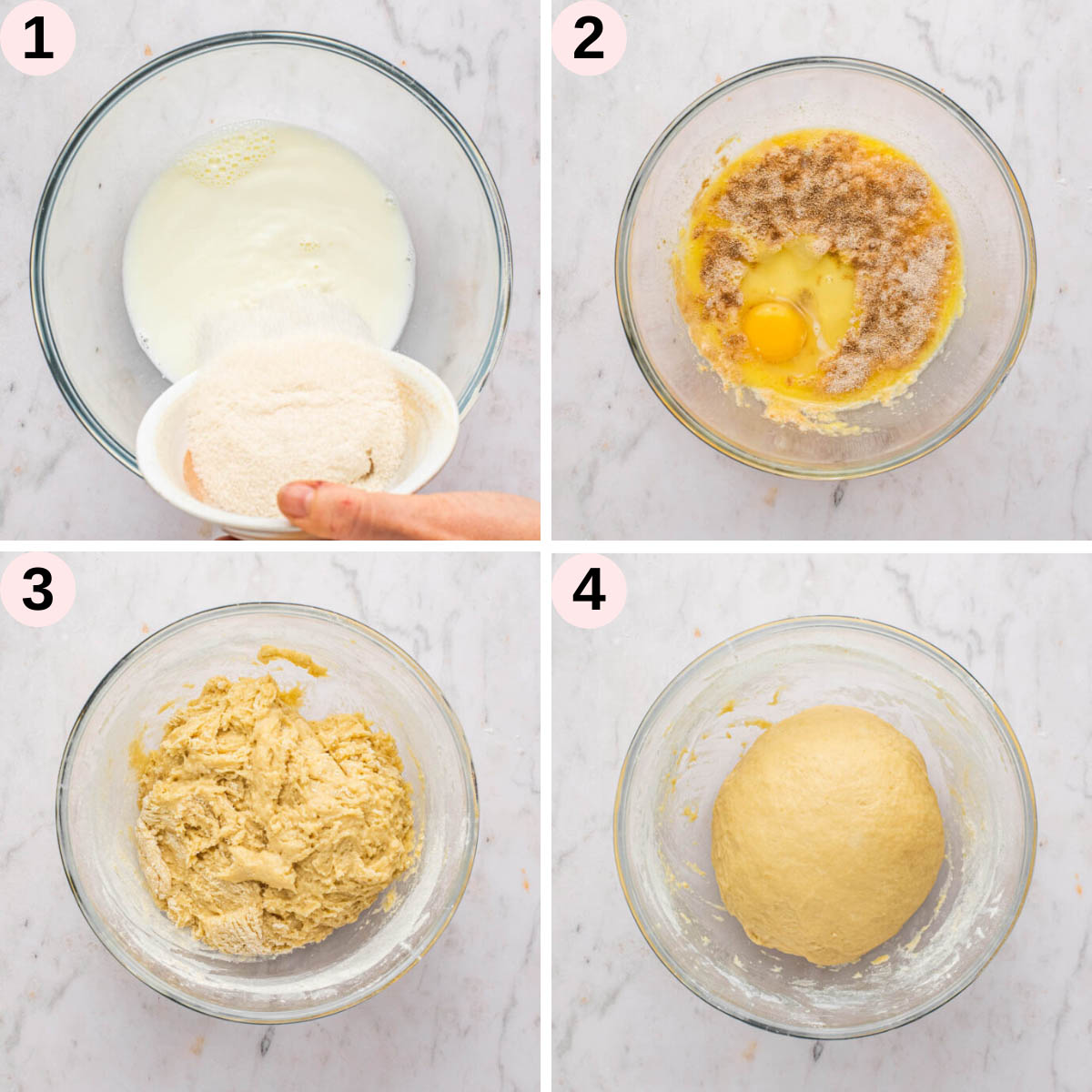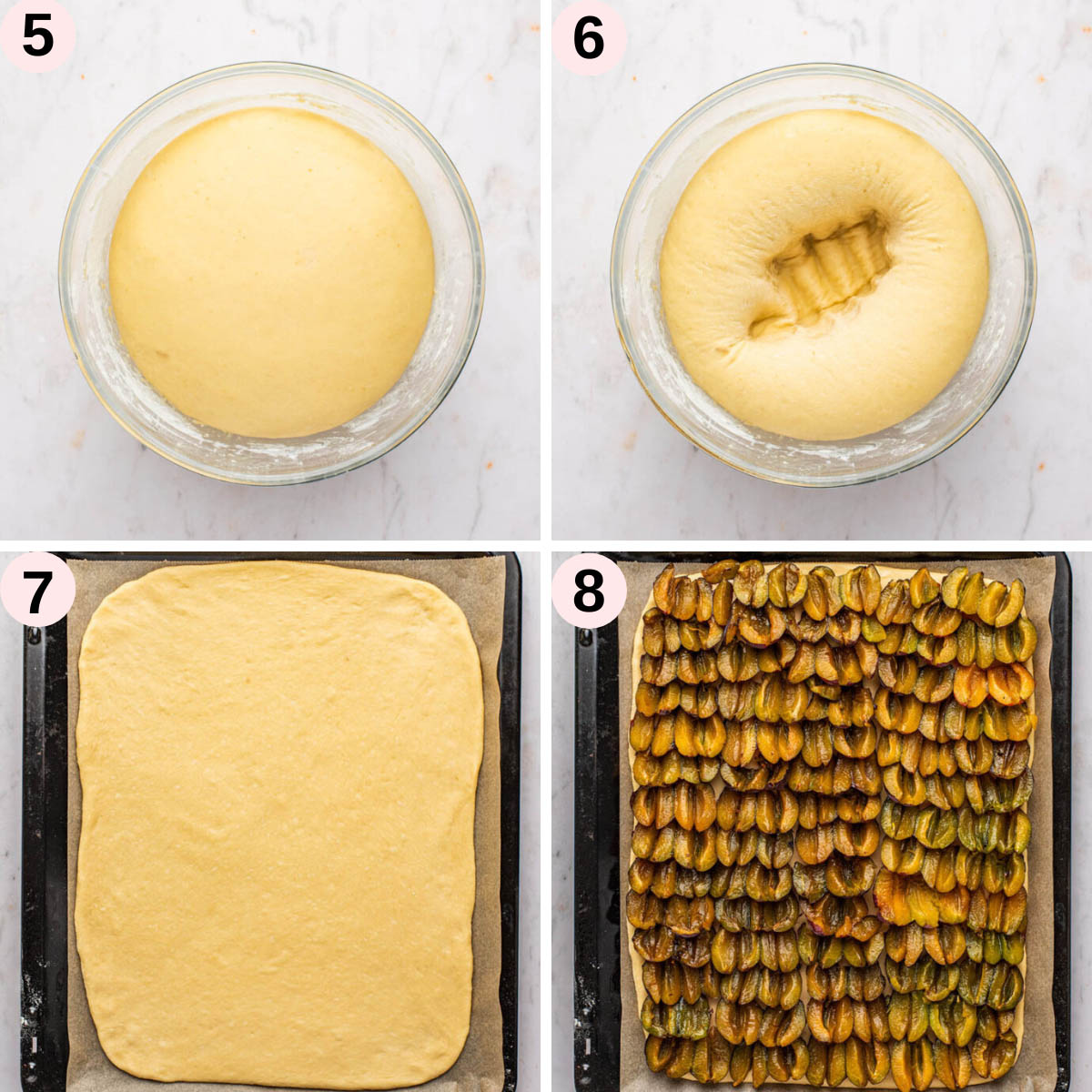A yeasted sweet dough base topped with prune plums, this German plum cake is early fall perfection. A very traditional version of a classic yeasted cake, this cake is a fall staple in German-speaking countries. It's made with a specific type of plum -Zwetschgen or prune plums - which are only available for a short period of time in the fall.
Though you'll sometimes see Zwetschgenkuchen made with streusel, this topping-free version is closer to what German grandmothers make at home. A true classic, this recipe comes from our German member Alex, who's been making this cake since childhood, and the recipe is based on her great-grandmother's plum cake.
Yeasted cakes are a wonderful treat you're probably more familiar with than you realize! Recipes like these these apple cinnamon rolls with cream cheese frosting are essentially yeasted cakes, just shaped differently than the recipe we're sharing today.

Ingredients

Ingredient Notes and Substitutions
- Yeast: use either traditional or quick yeast. Since the yeast is bloomed (added to the warm milk) they can be used interchangeably in this recipe.
- Prune plums: if you can't find prune plums, any other plums you can find are fine. They are typically sweeter and contain more juice than prune plums, so it isn't quite the same, but still good.
- Yeast: you can substitute fresh yeast if you want. The amount is half a cube (21 grams) and can be crumbled into the milk mixture at the same point in the recipe that dry yeast is added.
- Butter: a good quality dairy-free margarine can be used in place of butter.
- Milk: can be replaced with plant-based milk for a dairy-free alternative.
Method

Step 1: heat the milk and pour it into a mixing bowl. Add the sugar and butter and whisk to combine.
Step 2: bloom the yeast in the warm milk, then add the egg and whisk.
Step 3: add the flour and salt and stir with a wooden spoon until a shaggy dough forms.
Step 4: knead the dough for 8 to 10 minutes then place back in the bowl and rise for one hour.

Step 5: the dough should have doubled in size at this point.
Step 6: gently punch down the dough to deflate.
Step 7: use a rolling pin to roll the dough out into a large rectangle to fit a 12x16-inch (40x30-cm) baking sheet.
Step 8: place the plums on top in an overlapping layer over the dough right to the edges. Bake for 30 to 35 minutes and cool slightly before slicing and serving.
Top Tips
1. If the yeast doesn't bloom or expand, it's probably dead, and you will need to start again.
2. Make sure the milk mixture is just warm to the touch, not hot.
3. The rising time may vary slightly based on the ambient temperature of your environment.
Recipe Notes
Check that your yeast isn't expired before beginning. Keep dried yeast in a dark container in the fridge for the longest shelf life.
Rising dough in the oven with the light on is great, or near a warm radiator.
No second rise is needed once the dough is rolled out.
Using this many plums on the cake makes for a lot of juice during baking, and will make the edges of the cake pink and soft. This is normal (and delicious).
How to Store
Storage: keep the cake in a sealed container at room temperature for a day or two, but note that it spoils quickly due to all the fruit. The base is best on the day of baking.
Freezing: freeze the cake for up to a month in an airtight container.
FAQ
What is a yeasted cake?
It's a cake made with yeast rather than baking powder, and this was the most common way to bake cakes before baking powder and baking soda were invented in the 1800s.
What are prune plums?
Prune plums are a small egg-shaped stone fruit, often used in European baking recipes. They are the plums which are generally dried to make prunes.
Why didn't my dough rise?
Yeast can expire and become inactive or "dead". Dead yeast will not rise so, unfortunately, you will have to start again with freshly opened yeast.
More Fall Recipes
You must use the category slug, not a URL, in the category field.If you make this German Plum Cake or any other cake recipes on the Baked Collective, please take a moment to rate the recipe and leave a comment below. It’s such a help to others who want to try the recipe. For more baking, follow along on Instagram, TikTok, and YouTube.
German Plum Cake
Equipment
- Small saucepan
- Mixing bowl must be heat-safe
- Whisk
- Wooden spoon or spatula
- Tea towel
- baking sheet
- Parchment paper
- Measuring cups and spoons or a digital kitchen scale
Ingredients
- ¾ cup whole milk
- ½ cup sugar
- 3 tablespoons butter
- 2 ¼ teaspoons dry yeast
- 1 large egg at room temperature
- 2 ¾ cups all purpose white flour
- ¼ teaspoon sea salt
- 1 ½ lbs. prune plums de-stoned and partly quartered
Instructions
- Heat the milk in a small saucepan until hot but not boiling. Pour the milk into a large heat-safe mixing bowl. Add the sugar and butter, then whisk to combine.
- Check the temperature of the milk mixture with a finger. It should feel just warm, but not hot. Sprinkle the yeast over the milk mixture and set aside for 15 minutes. After this time, the yeast should bloom and expand.
- Whisk the egg into the mixture.
- Add the flour and salt, mixing with a wooden spoon or spatula until a shaggy dough forms. Turn the dough out onto a lightly floured work surface and knead until soft and smooth, 8-10 minutes.
- Place the kneaded dough back into the bowl and cover with a tea towel or plate. Set the bowl in a warm, draft-free spot for about an hour, or until the dough has doubled in size.
- Once the dough has risen, gently punch it down. Turn it out onto a lightly floured surface and roll it into a large rectangle to fit your largest baking sheet or one that is roughly 12x16 inches (40x30cm).
- Preheat the oven to 350°F (180°C) and line a large baking sheet with parchment paper.
- Place the plums in a thick, overlapping layer over the dough, making sure to go right to the edges.
- Once the oven is hot, bake the cake on the centre rack for 30-35 minutes. It can be hard to tell when it's done due to the juice from the plums, but it should look golden and the edges should feel firm but not hard when pressed with a fingertip.
- Remove the cake from the oven and cool fully on a wire rack. Cut into 16 squares and serve plain or with whipped cream.
Notes
- Check that your yeast isn't expired before beginning.
- Rising dough in the oven with the light on is great, or near a warm radiator.
- No second rise is needed once the dough is rolled out.
- Using this many plums on the cake makes for a lot of juice during baking, and will make the edges of the cake pink and soft. This is normal and delicious.

Prune plum cake is the tastiest, juiciest cake ever. I like mine with Streusel + some whipping cream. Delicious